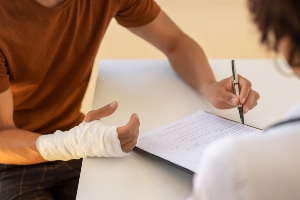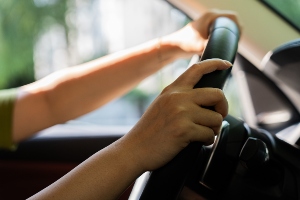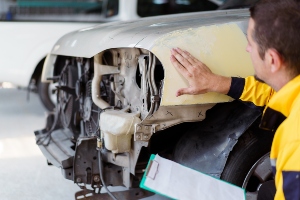What Is a Duty of Care Breach in a Minneapolis Personal Injury Case?
Most Minneapolis personal injury cases involve a breach of a duty of care one party owed to another. Injured victims can recover compensation if they prove another party breached a duty of care and the breach directly caused an injury and damages.
Table of Contents
- What Is a Breach of the Duty of Care?
- What Are Some Examples of a Breach of Duty of Care in a Minneapolis Injury Case?
- What Is the Difference Between Breach of Duty and Negligence?
- What Can I Use as Evidence of a Breach of Duty?
- What Are Some Common Defenses Against a Breached Duty of Care?
- Injured Due to Someone’s Else Negligence? Call TSR Injury Law
If you suffered a personal injury due to the negligence of someone else, TSR Injury Law’s licensed attorneys may be able to help you recover the cost of your medical care and other damages. Our Minneapolis personal injury lawyers do not charge any upfront fees for our legal services, and we have obtained more than $1 billion for our clients.
Learn more about your post-injury legal options by calling: (612) TSR-TIME.
What Is a Breach of the Duty of Care?

A breach of duty of care happens when one party fails to take reasonable steps to prevent harm to someone else. In other words, the party in question failed to act the way a reasonable person would have in a similar situation. This is also known as the “reasonable person” standard.
A breach often means that one party failed to act when action would have likely prevented an injury. Breaches of the duty of care can also involve:
- Careless or reckless behavior
- Ignoring safety regulations
- Poor training or supervision of others
Another factor in the breach of duty of care is the foreseeability of harm. This means that failing to uphold the reasonable person standard is likely to cause injuries and damages.
What Are Some Examples of a Breach of Duty of Care in a Minneapolis Injury Case?
There are numerous examples of actions that breach a duty of care and could give rise to injury claims:
- Reckless Driving: Drivers have a duty to follow traffic laws and operate their vehicles in a safe manner. This includes stopping at red lights, obeying speed limits and refraining from driving under the influence. If drivers fail to take these kinds of reasonable steps, they are likely breaching a duty of care.
- Failure to Follow Trucking Industry Regulations: Trucking companies may fail to enforce regulations, such as rules on drug testing, hours of service, or maintenance checks and repairs of a commercial truck.
- Failure to Maintain Safe Premises: Property owners must keep their premises reasonably safe. For example, many property owners have a duty to clean up spills, repair broken steps and ensure adequate lighting to prevent accidents.
- Losing Control of a Dog: Owners must take reasonable precautions to prevent their pets from biting or attacking other people, such as keeping them on a leash when on another’s property. If a dog bites someone who was legally on the owner’s property, the owner may have breached a duty of care. There are additional duties for dog owners whose pets have been designated as dangerous by relevant authorities.
- Designing or Manufacturing Unsafe Products: Manufacturers and sellers must take reasonable steps to ensure consumer safety when products are used as intended. Manufacturers are often required to test products, provide clear usage instructions and warn consumers about potential hazards.
What Is the Difference Between Breach of Duty and Negligence?
Sometimes people use negligence and breach of duty of care interchangeably, but they are two different things.
Breach of a duty of care is just one element of negligence. The other three elements are: duty of care, causation and damages. If your lawyer can establish a breach of duty of care, prove the breach directly led to your injuries and prove those injuries caused damages, he or she has grounds for legal action, such as an insurance claim or lawsuit.
However, your lawyer may also need to establish that the risk of harm was foreseeable. In other words, the negligent party should have known that its failure to uphold the duty of care would cause harm.
What Can I Use as Evidence of a Breach of Duty?
In a negligence case, the victim has the burden of proof. That means it is your responsibility to prove the existence of a duty of care and the breach of that duty of care. This evidence must be presented in an insurance claim or courtroom.
There are various forms of evidence that may prove a breach of duty of care:
Proof of the Defendant’s Actions
Proof could include pictures, video or other records that show what happened. For example, if you were injured in a commercial truck crash, records may show violations of industry regulations. If you were injured in a car crash, dash cam video may show the other driver breaking traffic laws.
Witness Testimony
Statements from people who witnessed the accident could help establish a breached duty of care. If your case goes to court, these witnesses can testify about what they saw and heard during the incident.
Expert Testimony
For example, a medical expert could provide insight into how the victim’s injuries occurred, including how the breached duty of care contributed to the situation. Accident reconstruction experts can explain how another driver’s negligence caused the collision to occur.
Records of Past Incidents
For example, if you slipped and fell on another’s property, your lawyer may look for evidence of previous slip and fall accidents caused by the same hazardous condition. This helps to emphasize that the property owner knew of the duty of care and failed to address the danger. This combined with evidence about the most recent incident could help show a breach of duty of care.
What Are Some Common Defenses Against a Breached Duty of Care?
You can rest assured the insurance company is going to dispute that there was a breach of duty of care. They may even dispute the existence of the duty of care.
They may contend that you are at fault for the accident through your own negligence. For instance, if you were injured in a car crash, the insurance company may claim you were negligent, such as by speeding or not paying attention.
Minnesota allows injured victims to seek compensation if they are found to be partially at fault. However, partial fault can reduce the value of your claim.
What if I Signed a Liability Waiver?
Proving a breach of duty of care can be even more complicated if you signed a liability waiver. For example, you may have signed a waiver before joining a gym/fitness center or taking part in an inherently dangerous activity, like rock climbing or skydiving.
In this situation, the liable party would claim your signature released them from liability. However, liability waivers might not hold up in court. State law says waivers cannot excuse parties from liability for conduct that exceeds ordinary negligence.
Injured Due to Someone’s Else Negligence? Call TSR Injury Law
Have you suffered a preventable injury?
If you think negligence was involved, call TSR Injury Law to review legal options. We are here to answer your legal questions and advocate for your rights. If we represent you, we are committed to securing the compensation you need to recover.
There are no upfront fees or costs unless we win compensation for you, which means there is no risk in giving us a call.
Schedule a free legal consultation to learn if you have a case. Call (612) TSR-TIME.




